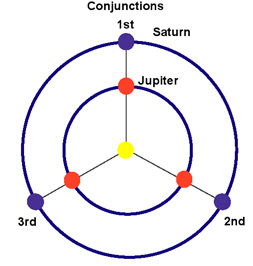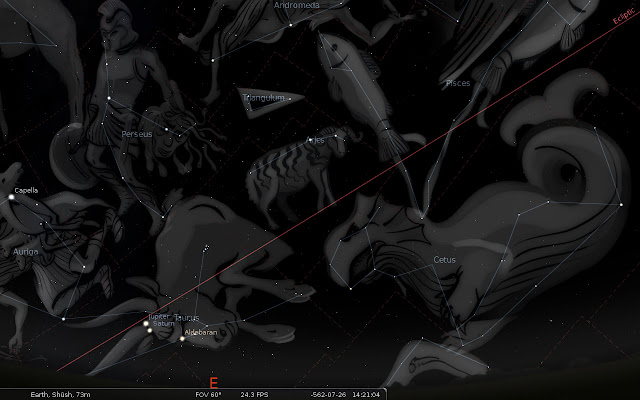|
|
General: SATURNO=CRONOS=TOROIDE=ANILLO=20 DE ABRIL ("MAQUINA DEL TIEMPO")=CUBO
Triar un altre plafó de missatges |
|
|
-
saintseiyaforos.net/.../71127-según-ustedes-en-que-categoría-podemos-ubicar -a-saturno/
Editado por Iccc, 20 abril 2014 - 06:28 . ... como dijeron varios, saturno es el
equivalente romano de cronos, el titan que engendro a los ...
-
saintseiyaforos.net/topic/70769-¿el-dios-cronos-kronos.../page-2
Editado por zeus god king, 20 abril 2014 - 13:13 . .... crono y saturno son el
simbolo del tiempo que es otra cosa ..por que ambos son los ...
-
entremujeres.clarin.com/.../saturno-astros-astrologia-trabajo-profesion- vocacion-beatriz-leveratto-columnista_0_982101865.html
Es la ley de lo irrefutable, la ley de gravedad, “Cronos”: el paso del tiempo.
Muestra la ... Excepto el período del de 15 octubre de 2000 al 20 de abril de
2001.
-
noticiasdiarias.com.ve/2015/.../saturno-cronos-el-senor-del-tiempo/
5 Ene 2015 ... Saturno – Cronos, el señor del tiempo. ... Compartir Aries del 21 de Marzo al 20
de Abril Recibes propuestas interesantes en apariencia, pero ...
-
norfipc.com/.../simbolos-signos-unicode-planetas-astronomia-horoscopo.php
Toma su nombre de Urano, padre de Crono (Saturno) en la mitología griega. ...
Es la constelacion que rige los nacidos desde el 21 de marzo al 20 de abril.
-
liberatuser.es/terapiasalternativaslossignosastrologicos.html
Rige a las personas nacidas entre el 21 de Marzo y el 20 de Abril. ..... En la
antigua Mitología Romana, Saturno (y su equivalente griego, Cronos) es el
padre de ...
-
www.upv.es/satelite/trabajos/pracGrupo1/saturno/crono.htm
El siguiente es un resumen de los Anillos de Saturno: ... W. Herschel 1789 Tetis
III 530 7.55e+20 294,660 G. Cassini 1684 Telesto XIII 17x14x13 ? ... Pioneer 11 -
USA Júpiter/Saturno - 259 kg - (Abril 6, 1973 - Noviembre 1995) Pioneer 11 ...
-
https://astrofanaticos.wordpress.com/2012/04/13/
13 Abr 2012 ... de circulosolar en Uncategorized Etiquetas:saturno, sistema solar. Saturno o
Cronos(su nombre para los griegos) se le considera el dios de las cosechas y el
tiempo. Sus padres ... 16, 17, 18, 19, 20, 21, 22. 23, 24, 25, 26, 27 ...
-
elmundodesaramujerde35.blogspot.com/.../saturno-o-cronos-relatos- mitologicos.html
14 Dic 2010 ... Pero, me gusto la historia del Dios Saturno y hoy quiero compartirla con ustedes.
... cuando se casa Cronos o Saturno, tuvo muchos hijos y le exigía a su mujer
que le entregara los recién nacidos ... Anónimo 18 de diciembre de 2010, 8:20 ....
julio (30). ▻ junio (25). ▻ mayo (27). ▻ abril (29). ▻ marzo (20) ...
-
astrojem.com/teorias/titan.html
Con él, tuvo la inmensa alegría de ver los cuatro satélites de Saturno
descubiertos por Galileo. ... y hermanas de Crono (el nombre griego para el dios
romano del tiempo Saturno) para .... Noticia del 20 de abril de 2012, publicada
por la ESA.
|
|
|
|
|
Nine Worlds / Nine Months
If we add a sphere for the stars at the top and one for the earth at the bottom of the hexagram we get a figure similar to Manley P. Hall's Nine Worlds image below. Hall recommends that this is the form of the Norse Tree of Life, Yggdrasil. Since in the Norse cosmology the earth is at the center and the sun, as the soul's goal, is at the top, this is a geocentric image, but the basic form is the same as the hexagram image above.
 
Metatron's Cube
As you can see there are four markers for the cardinal directions which along with the first nine circles figure to us a 3D Cartesian coordinate grid and the six directions in space , what we call the 'cube of space', or Metatron's Cube (below) which should now be seen in a new light as 13 celestial spheres. If the earth is not the center as in the nine worlds image we need new points as direction markers. And we find them in Ezekiel. A man, a lion, ox and an eagle. And Rev 4 lion calf man eagle which is Aq Leo Taurus and Scorpio. the fixed signs in the zodiac. In the context of the solar system, these represent the four corners.
 
Ezekiel's story about wheels within wheels may just turn out to be an astronomical metaphor illustrated by Metatron's Cube. The sun is located correctly at the center. The new corners are the fixed zodiac signs. Six new spheres have been added to the original hexagram image for a total of thirteen. Metatron's Cube is a heliocentric version of the Nine World's image above.
Enoch
We read in the Bible that Enoch was the sixth patriarch after Adam and that he lived 365 years (the number of days in a solar year on earth) before he was transported to heaven. Kabbalistic legend tells us that he was transmuted into Archangel Metatron, as in Metatron's Cube. That is, Enoch is the 7th Patriarch (as in 7 spheres) and is associated with the sun; and Metatron's Cube is Enoch's Cube.
In the Southern Jourisdiction of the Scottish Rites the Thirteenth Degree relates to what is called the Royal Arch of Enoch (as in an arch supported by two columns). In this Enoch legend he is instructed to excavate nine chambers featuring nine arches and to hide a white cube bearing a golden triangle inscribed with the name of God. Instead of dealing with the soul's journey alone (as Metatron's Cube appears to) this legend deals with the history of the World/Universe. In Enoch's myth, the cube represents materiality in general (Shekinah), and the golden traingle represents the divine spark inherent in everything. (see Alchemy, Hasidism etc.) The lowest of the nine arcs (ark, arch) in this scheme is the earth. This is the Shekinah story again.
Manley Hall suggests that the nine worlds image relates to the nine stages of the Nordic initiation, the chambers where the rites were performed and the nine divisions of their cosmological template. Albert Pike suggests the same thing of the Enoch legend, that it pointed to a rite with nine stages that was performed literally underground, the form of which was related mathematically to their astronomical template. The logic goes like this: We'll form a club based on the nine planetary spheres, there with will be nine degrees to represent the phases of the souls journey. These numbers and ideas will inform our architecture and ceremonies. Underground chambers symbolize the womb, and nine of them would represent the human gestation period, nine months. The legend is an astronomy learning tool fashioned around the story of human reproduction.
The US Great Seal
 
If you look at the configuration of stars above the eagles head on the back of the One Dollar bill, you will see that the central stars are aligned differently than the inner ring of circles in Metatron's Cube. In the cube five circles each are aligned along three axes that cross the center point. In the seal the stars align along lines that connect every other outer point, four on each line. Lines in this configuration never cross the center point. This makes a better representation of a cubic city with 12 gates than the Metatron's Cube arrangement does. The cube features the hexagon and the seal the hexagram (st. of david).
There are 13 layers of stones on the pyramid, 13 stars above the eagle, and nine feathers in the eagle's tail. Overlapping equal circles centered on the same line (vesica pisces) help locate the corners of inscribed triangles and hexagrams. Three overlapping equal circles mark the diameter of a circle 4r or 2d wide, twice the size of the inner circle, as well as the diameters of four 1r wide circles. In the image on the right above we match the small circle at the top of the figure with the circle around the stars above the eagle.
 
The model for the seal configuration is twin tetractys of ten points each. (The Pythagoreans named the number 10 tetractys because it was the sum of the first four numbers.) The 13 symbolism in the seal could bear looking at again in light of this finding. 13 can be understood as the sun and 12 zodiac signs, 13 lunar months a year, or nine celestial spheres and the four directions as in Metatron's Cube.
The DC map
Looking at the DC map you can see that the pentagram seems to form an isoceles triangle with New Hampshire Ave as the left side. 16th Street provides the center line for that triangle that centers on the WH. Penn Ave runs from NW to SE, from Georgetown to the WH the CB and the East Branch of the Potomac. NYA crosses at the WH as well making the three axes which form the diagonals of the large rectangle in the cube. N St marks the top side of this rect. in the map.
 
The five points on 16th St are the top of the triangle, Scott Circle, the WH, the Wash Mmt, and the Jeff Mml. The points on Penn Ave are Georgetown, Washington Cr, The WH, the Nat Archives Bldg., and the Capitol. Nick Mann claims that the DC planners didn't use a hexagonal form for the map, when in fact they used it for both the map and the Great Seal design. They used a hexagon and the pentagon in the map.
Continue
|
|
|
|
|
Jupiter y Saturno en nuestras vidas.
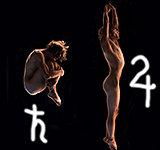
En estos días acaba de comenzar una danza entre los dos planetas más grandes de nuestro sistema solar, Júpiter y Saturno. Dos poderosos arquetipos que de alguna manera son opuestos, aunque no exactamente.
Un ciclo completo entre estos dos planetas comienza cada 20 años. Este ciclo en que nos encontramos ahora comenzó el 28 de Mayo 2000 con la conjunción en Tauro. La primera cuadratura ocurrió con Jupiter en Escorpio y Saturno en Leo (al contrario que ahora), el 17 de diciembre del 2005. La oposición fué el 23 de Mayo del 2010 con Júpiter en Piscis y Saturno en Virgo y la cuadratura que comienza ahora, será exacta el 3 de Agosto del 2015 con Júpiter en Leo y Saturno en Escorpio, a unos 28º de cada signo. Aunque en Marzo y Mayo 2016 volverán a encontrarse pero esta vez con Júpiter ya en Virgo y Saturno en Sagitario. Por tanto en cada ciclo, la primera cuadratura ocurre al quinto año, después de la conjunción, la oposición al décimo año y a los 15 años ocurre la última cuadratura menguante, como la que estamos viviendo ahora.
|
|
|
|
|

Por la parte interior está la carta de la conjunción de Saturno y Júpiter ocurrida el dia 28 de mayo del 2000 a las 21:36 hora solar en Madrid. |
|
|
|
|
Consecutive Conjunctions of Jupiter and Saturn from BC 185 to AD 114
First published in the International Planetarium Society Journal Volume 14, #3, 3rd quarter, 1985
ABSTRACT
 Researching possible explanations for a more accurate telling of the "Star of Bethlehem" has led to a rediscovery of the "method" used by Johannes Kepler to determine important dates in world history. Kepler argued that great events in history occurred every 800 years using multiples of Jupiter/Saturn conjunctions. Researching possible explanations for a more accurate telling of the "Star of Bethlehem" has led to a rediscovery of the "method" used by Johannes Kepler to determine important dates in world history. Kepler argued that great events in history occurred every 800 years using multiples of Jupiter/Saturn conjunctions.
Johannes Kepler's Method
The "method" plots geocentrically the consecutive conjunctions of Jupiter and Saturn (See Table 1). Each conjunction occurs on the average every 19.85 years and they are approximately 117 degrees apart. The figures used in the diagram below are from Bryant Tuckerman's, Planetary Lunar and Solar Positions, Volumes I & II, Memoirs of the American Philosophical Society , Philadelphia.
 The diagram leads me to ask the following questions: The diagram leads me to ask the following questions:
- Did the Magi use or know about this "method"?
- If they knew about this "method," how did they interpret it?
- 3) Are "triple" conjunctions of Jupiter and Saturn really significant?
- 4) Do written records of this "method" exist in ancient literature or mythology?
- 5) How does one interpret seven consecutive conjunctions of Jupiter and Saturn, in Pisces, approaching the vernal equinox?
THE ROLE OF JUPITER/SATURN CONJUNCTIONS IN MYTHOLOGY
The heart of this thesis, originated by Giorgio de Santillana and Hertha von Dechend in their book, Hamlet's Mill (l977), and supported by Harald A. T. Reiche of the Massachusetts Institute of Technology, holds that "myths were vehicles for memorizing and transmitting certain kinds of astronomical and cosmological information!" The mythological formula identified by the authors is really a mechanism to precisely explain the slowest of all observable motions of the heavens, the precession of the equinoxes. According to de Santillana and von Dechend, "Number gave the key. Way back in time, before writing was even invented, it was measures and counting that provided the armature, the frame on which the rich texture of real myth was to grow!"
The mythological framework is splendid indeed, for it is the celestial sphere. Within the celestial sphere, we find the "Mythical Earth." This Mythical Earth is not the physical planet but instead the implied plane through the four points of the year, marked by the equinoxes and solstices . In other words The Mythical Earth is the Celestial Ecliptic plane! Von Dechend and de Santillana explain that the zodiacal constellations that rise helically are the points that locate the "Mythical Earth!" However, the framework is not fixed but constantly changing due to precession of the equinoxes. That, they argue, is what prehistoric, preliterate man was trying to tell us or preserve knowledge of, by using his scientific language, mythology.
But the most important aspect of the Jupiter/Saturn mythological relationship is seen with the realization that Saturn and Jupiter can be used as a clock for keeping track of "cosmological" periods of time, particularly, precession of the equinoxes.
According to von Dechend and de Santillana, there is no doubt that the Greek Kronos (Saturn) is the same as Chronos (Father Time). In dialogue between Kronos (Chronos) and Jupiter (Zeus), we learn:
"kai panta ta metrates holes demiourgias endidosin"
which translates as, "Saturn gives Jupiter all the measures of creation." With this act of Jupiter overthrowing his father, the sun, moon and planets are set in motion. During each successive conjunction, Saturn gives Jupiter "all the measures of creation!" Furthermore, successive Jupiter/Saturn conjunctions can be used to keep track of even longer periods of time.
Successive conjunctions of Jupiter and Saturn are one of the easiest-to-observe, long-period astronomical cycles. That this cycle repeats in almost twenty year intervals (more precisely (19.85 years on the average) is less important than the fact that it is a re-occurring, measurable period of time.
 Johannes Kepler was the last of the great "Mythographers". In De Stella Nova. Kepler applied observational data (i.e." successive conjunctions of Jupiter and Saturn) to reconstruct the history of the world. His chosen method was borrowed from the "lingua franca" of astrology. This method has nothing to do with astrology per se, but Kepler found in it a simple, "bookkeeping" style for tabulating large quantities of time. Johannes Kepler was the last of the great "Mythographers". In De Stella Nova. Kepler applied observational data (i.e." successive conjunctions of Jupiter and Saturn) to reconstruct the history of the world. His chosen method was borrowed from the "lingua franca" of astrology. This method has nothing to do with astrology per se, but Kepler found in it a simple, "bookkeeping" style for tabulating large quantities of time.
The Diagram below illustrates successive plots of  Jupiter/Saturn conjunctions. To understand the diagram, the following relationships are of value: Jupiter/Saturn conjunctions. To understand the diagram, the following relationships are of value:
- Any conjunction of Jupiter and Saturn is called a "great conjunction."
- Three successive "great conjunctions" form a triangle called a "Trigon".
- A Trigon is equivalent to a passage of approximately 60 years. (59.55 years)
- Twelve 'great conjunctions' equal a 'middle conjunction'. (238 Years)
- Four 'middle conjunctions' equal a 'big conjunction'. (952.8 years)
- Three 'big conjunctions' equal a 'mighty conjunction'. (2858.4 Years)
The diagram shows that in every 60 year period (59.55 years to be more exact), a "great conjunction" occurs near or slightly displaced from the point of origin. While successive "great conjunctions" are about 117 degrees apart, the vertices of successive trigons move approximately 360 - (117 x 3) = 9 degrees farther eastward in this same period. We can see that it takes 40 "great conjunctions" to return to our initial starting point (9 degrees times 40 = 360 degrees).
 The elapsed time counted by proceeding from conjunction to conjunction and back to the origin is thus 40 times 20 years = 800 years, or more precisely, 794.25 years. This represents one-third of a "rotation" of the initial trigon. Similarly, the elapsed time counted by proceeding from trigon to trigon, continuing around the zodiacal circle and back to the original starting point is 40 x 60 years = 2,400 years. A more accurate value for the actual elapsed time is 2,382 years. The elapsed time counted by proceeding from conjunction to conjunction and back to the origin is thus 40 times 20 years = 800 years, or more precisely, 794.25 years. This represents one-third of a "rotation" of the initial trigon. Similarly, the elapsed time counted by proceeding from trigon to trigon, continuing around the zodiacal circle and back to the original starting point is 40 x 60 years = 2,400 years. A more accurate value for the actual elapsed time is 2,382 years.
What we see here is a very neat method for keeping track of cosmological periods of time. The amount of elapsed time observed by the ancients would be incredibly close to the amount of time necessary for the vernal equinox to actually move through one zodiacal constellation (25,800 years divided by 12 equals 2,150 years). Now let us return to Kepler and his method for determining great moments in history, using this "lingua franca" of astrology.
Astrology had grouped the 12 zodiacal constellations into four collections called "triplicities!" or Trigons. These triplicities, and their associated "elements" are:
Aries, Leo, and Sagittarius…………..Fire
Taurus, Virgo and Capricornus…………Earth
Gemini, Libra and Aquarius……………Air
Cancer, Scorpius and Pisces ………….Water
 Successive great conjunctions of Jupiter and Saturn will remain in one triplicity about 200 years (10 successive conjunctions). In other words, it will take 800 years or 40 successive great conjunctions to pass through the four triplicities once. However, in order for all the great conjunctions to return, the cycle must be repeated two more times, for a total of 2400 years. Successive great conjunctions of Jupiter and Saturn will remain in one triplicity about 200 years (10 successive conjunctions). In other words, it will take 800 years or 40 successive great conjunctions to pass through the four triplicities once. However, in order for all the great conjunctions to return, the cycle must be repeated two more times, for a total of 2400 years.
According to Kepler, great worldly events thus took place in this manner every 800 years when great conjunctions entered a Fiery Triplicity.
Using this bookkeeping method, it is possible to predict when and where succeeding great conjunctions will occur every 59.55 years. In following this line of reasoning, it becomes imperative to see the great conjunctions as they occurred during the centuries preceding the Christian Era. (Refer back to Figure 1.) The diagram contains plots of successive great conjunctions from 185 B.C. to 114 A.D. and see diagram below plotted using Starry Night Pro V 5
 Great Conjunctions are plotted from 185 BC to 54 AD. Assuming that the constellation of Pisces covers some 45 degrees of sky, 7 Great Conjunctions took place in Pisces in from 185 BC to 54 AD. Each succeeding conjunction occurred closer and closer to the vernal equinox.
This fact, combined with a knowledge that the vernal equinox itself was moving from Aries into Pisces during this era symbolically marking the end of a "World-Age" may thus be the key to understanding the nature of the Star of Bethlehem. It is certainly the theory favored by von Dechend and de Santillana.
The Great Conjunctions of 7 B.C. is unusual in that it was a "triple conjunction". Triple Great Conjunctions are rare and do not happen in a predictable pattern. However there was a "triple" Great Conjunction in 146 B.C., so it was probably known that triples do occur.
Also note that on February 9th and March 4th of 6 BC Mars joined Jupiter and Saturn forming what Kepler called a Grand Conjunction. Kepler saw a similar massing of the planets (a Grand Conjunction) of Jupiter, Saturn and Mars in in 1604 AD. Co-incidentally Kepler saw a Super Nova in the same year (1604). Those events got Kepler thinking about an explanation for the Star of Bethlehem. But, what did the Magi know, and who were they and why were they looking for a "king"?
Consider the following: Santillana and von Dechend in Hamlet's Mill, interprets the Persian word used for the constellation of “Aries” as meaning the established title for supreme power, in other words “Ruler of Aries”
Also in “Hamlet’s Mill,” we learn of a marvelous Persian myth featuring a Hamlet-like figure called Kai Khusrau. This figure was not a real person, but the “supreme power of Iran,” a mythical person who existed only in the celestial realm. Upon his crowning, Kai Khusrau states:
“The whole world is my kingdom all is mine
From Pisces downward to the Bull’s head.”
Professor von Dechend characterizes Kai Khusrau’s kingship as “a reign not only of heaven, it is essentially of time.” Kai Khusrau was a “world age leader. The story, as quoted from “Hamlet’s Mill,” goes on to say of the great holy leader that he:
“prepares his departure, takes leave of his paladins,
leaving aside their supplications and those of his whole army.”
A cry arose from the army of Iran:
The sun hath wandered from its way in heaven!
The chieftains’ heads were heavy at the news.
The warriors slept in pain, and when the sun
Rose over the hills the Shah had disappeared.
The five paladins were lost and buried in a snowstorm.
We must conclude that the vernal equinox and the equinoctial sun no longer belonged to Aries. The supreme power of the equinoctial sun was passed to someone else! The supreme ruler of Pisces! Is this why the Magi were searching for a new “king.” They were looking for the new bearer of the power of equinoctial sun, which had passed' to Pisces the Fish?
In short, was the Star of Bethlehem really an equinoctial sun entering the constellation of Pisces??
“And, lo, the star which they had seen in the East
went before them, till it came to rest
over the place where the young child lay.”
I am writing a "book" about the Magi's Star
Details about the book will be posted here shortly. Thanks!
http://uofgts.com/Magi.html
4000 BC Adam Creato mundi
3200 Enoch Latrocinia, urbes, artes, tyrannis
2400 Noah Diluvium
1600 Moses Exitus es Aegypto, Lex
800 Isaiah Aera, Graecorum, Babyloniorum, Romanorum
0 Christ Monarchia Romana Reformatio orbis
800 AD Carolus Magnus Imperium Occidentis et Saracenorum
1600 Rudolfus II Vita, facta et vota nostra qui haec disserimus |
|
|
|
|
 |
[NOTE: In truth this cycle lasts around 800 years. The Jupiter-Saturn conjunctions occur every 20 years and they stay in the same element - Air, Earth, Water or Fire - for around 160 to 200 years. The cycle of earth signs began in 1802 in Virgo and completed with the last conjunction in Taurus in May 2000. The next conjunction will occur in Aquarius (air) in December 2020. Thus the entire cycle through all the elements lasts for around 40 conjunctions and takes around 800 years.]
|
|
|
|
|
|
Jupiter-Saturn Conjunctions
The outer planets visible to the naked eye, Jupiter and Saturn, especially their conjunctions, play a central role in the Zoroastrian astrology of the world. Some authors such as Courtney Roberts state, "It was the Persians who first developed the astrological use of the cycle of Jupiter Saturn conjunctions. ...These exotic chronologies travelled well, and made as profound an impact on astronomy and astrology in Judea and the Christian West as they did throughout the vast Moslem empire." Roberts also states that "We rarely acknowledge the far-reaching scientific and religious contributions of the Persians, the traditional enemies of our cultural heroes, the Greeks and Romans." In the ancient Persian system of calculating Jupiter-Saturn conjunctions adopted by Abu Ma’shar al Balkhi (Latinized as Albumasar, 787-886 CE), the number of revolutions of Saturn in a world-year of 360,000 solar-years is 12,214, and of Jupiter 30,352. These revolutions result in 18,138 mean conjunctions in 360,000 years. 360,000/18,138 = 19.84783 years, the time between two successive mean Jupiter-Saturn conjunctions (say, 20 years) (a modern calculation finds the figure to be 19.8592 years). These 20-year conjunctions are called small conjunctions in the Persian system. Between small conjunctions, the first decade after a conjunction, Jupiter dominates Saturn as it is said to wax relative to Saturn. The second decade after the conjunction - the waning of Jupiter - is a period when Saturn dominates. The mean motion of the conjunctions from one conjunction to the next is 12,214/18,138 x 360° = 242°25'17" (say 243°) or 8 zodiacal signs plus 2°25’17”. This figure is explicitly stated in Abu Ma’shar's Book of Conjunctions. [We have noted earlier that Jupiter orbits the Sun about once every twelve years (actually 11 years 315 days), and Saturn once every 30 years (actually 29 years 167 days). Jogging Jupiter therefore make 2 1/2 rotations while the sluggish Saturn makes one.] Since the two planets meet up or conjoin after the slower Saturn has moved ahead 8 zodiac signs (two-thirds of the way around the ecliptic circle, the sign they meet up in shares the same element as the previous sign.
The start of a cycle in the first degree of Varak or Aries has special significance in Zoroastrian-Persian astrology. Therefore, if the Jupiter and Saturn are first conjoined at the very start of Aries, in about 20 years they will meet up eight signs along the ecliptic in Sagittarius. However, they will not meet in the beginning portion of Sagittarius, but about 3° further along in the sign. The next time they meet (40 years from their initial meeting in Aries) will be another eight signs ahead, in Leo. In another 20 years they will meet up again in Aries about 9° further along from their initial meeting point. This reunion in Aries will have taken place just short of 60 years - actually closer to 59 and a half years, 59.5742 to be precise - from their initial meeting. Western astrologers call the 60 year cycle the first order recurrence of the conjunction.
The three signs that Jupiter and Saturn meet up in during this complete circuit (called a synodic cycle) around the ecliptic circle share an elemental association, fire. Together, Aries, Leo and Sagittarius form the Fire Triplicity or a trigon. They will continue to conjoin in the fire signs (in the same order) for three more circuits, that is for a total of around 178 and a half years, 178.7226 years to be more precise).
The 9° our re-conjoined Jupiter and Saturn advance every time they go around the ecliptic circle - the synodic cycle - will after the third go around put them in the beginning of the sign next to Sagittarius - Capricorn, which together with Virgo and Taurus form the Earth Triplicity. Jupiter and Saturn will conjoin in the Earth Triplicity for three synodic cycles - nearly another 180 years - as they did in the Fire Triplicity. The twenty-first conjunction is called a middle conjunction in Persian astrology.
From the Earth Triplicity they move on to the Air Triplicity: Libra, Gemini, and Aquarius, and finally to the Water Triplicity consisting of Cancer, Pisces and Scorpio.
From 5000 BCE, 20-year Jupiter-Saturn conjunctions are known to have taken place on Jan. 27, 4991 (in Libra/Air); Sept. 6, 4971 (in Cancer/Water); Apr. 9, 4951 (in Pisces/Water); Nov. 19, 4932 (in Scorpio/Water); July 5, 4911 (in Cancer/Water) and so on.
The shifting or drift from one triplicity into another is called a transfer of the transit. Since there are thirty degrees to a house occupied by a constellation of the zodiac, a 3° advance in a house after every conjunction will after 10 conjunctions amount to 30° and a shift or transit to an adjoining house.
Given that 10 conjunctions take place in each triplicity, the two will have completed around 40 conjunctions in just under 800 (actually 794.4) years. Every 41st conjunction brings the alignment back to within about 1 degree of its starting point (Aries in our example). The 1st, 41st and every 40th conjunction thereafter are called big conjunctions.
The next milestone in Zoroastrian cosmology is the conjunction after three big cycles called a mighty or grand conjunction.
In December, 1603, Kepler observed a conjunction of Jupiter and Saturn taking place in Sagittarius in the morning sky. The observation led him to calculate that such conjunctions took place in 800 year cycles and that one such conjunction would have taken place some 1600 years prior to his time, that is in 6 or 7 BCE.
Kepler wrote: "The magi were of Chaldea, where astrology was born, of which this is a dictum: Great conjunctions of planets in cardinal points especially in equinoctual points of Aries and Libra signify a universal change of affairs; and a cometary star appearing at the same time tells of the rise of a king." (Kepleri opera omnia 4.347).
The closest Jupiter-Saturn conjunction that can be calculated occurred on January 29, -4294 (4295 BCE) when they were 0.0139 degrees apart in Virgo. The Stellarium images show the close proximity increasing to March 21, the vernal equinox of 4295 BCE.
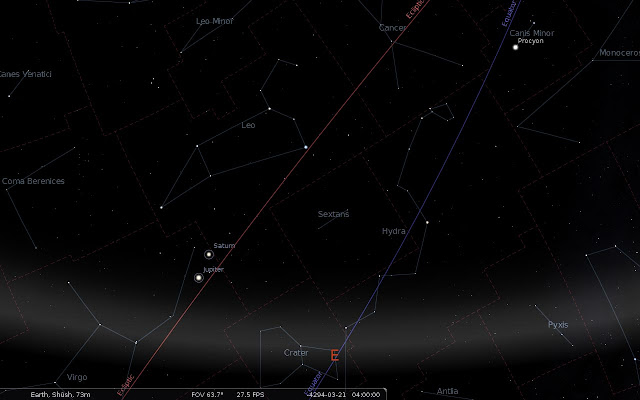 |
Closest Jupiter-Saturn Conjunction in Virgo. 2 pm March 21, 4295 BCE, Shush (Susa), Iran (Persia)
Image generated by the Stellarium program |
A note regarding the closeness of the Jupiter-Saturn conjunction. A close conjunction a degree apart, is nevertheless twice the diameter of a full moon. Triple Jupiter-Saturn ConjunctionsA triple conjunction occurs when the earth passes both Jupiter and Saturn within about 40 hours of each other followed by Jupiter's retrograde motion which carries it back past Saturn into a conjunction for the second time, and then forward again to bring it into conjunction with Saturn for a third time. While single conjunctions of Jupiter and Saturn occur regularly or periodically once every 20 (actually 19.8592) years, triple conjunctions (three conjunctions due to the retrograde movement of the planets in a seven month period) are not periodic. Jupiter passed Saturn 180 times during the 3600 year interval from 601 BCE to 3000 CE and of these passings, 20 were triple. This works out to average of 180 years between triple conjunctions. However, the actual interval between triple conjunctions varies between 40 and 377 years and is therefore not periodic. astrologers regard a triple conjunction of Jupiter and Saturn (within a span of about seven months) as an indicator of a major cultural change. BCE triple conjunctions took place in 4892 (in Pisces), 4753 (in Scorpio), 4594-3 (in Taurus), 4336 (in Aquarius), 4296-5 (in Cancer), 3919-18 (in Aries), 3780 (in Sagittarius), 3442-1 (in Cancer), 3363-2 (in Pisces), 3323-2 (in Cancer), 3065-4 (in Aries), 2807 (in Leo), 2767 (in Gemini), 2509 (in Pisces), 2469-8 (in Leo), 2350-49 (in Leo), 2092 (in Taurus), 1794-3 (in Cancer), 1536 (in Aries), 1496-5 (in Virgo-Leo), 1376 (in Virgo), 1119 (in Gemini), 978 (in Aquarius), 861, 821, 563-2 (in Taurus), 523-2, 146-5 and 7 BCE. Cyrus II, the Great, was born c. 600 to 576 and died August 530 BCE. He reigned from 559 BCE till his death. His birth and establishment of the Persian Empire are claimed to have been predicted in Jewish prophecy. CE triple conjunctions took place in 332-3, 411-12, 452, 709-10, 967-68 (in Pisces), 1007 - 1008, 1305 - 1306, 1425, 1682 - 1683, 1940-41 (in Aries), and again in 1980 - 1981 CE. Future triple conjunctions will be in 2238 - 2239 and 2279 CE. It is claimed that the triple conjunction (in Pisces) of 7 BCE included an occulation of Saturn by Jupiter, an event that is interpreted by some as the 'Star of Bethlehem' that guided the magi to Bethlehem. The position of the occulation/conjunction in the sky relative to Persia and the time of the day need to be investigated further. Also see The Star of Bethlehem: The Legacy of the Magi By Michael R. Molnar.
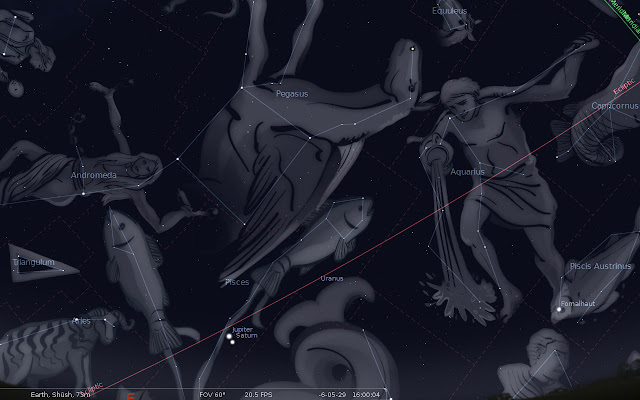 |
Jupiter-Saturn (triple) conjunction in Pisces on the eastern horizon at 3:30 am, May 29, 6 BCE as seen from Shush (Susa)
winter capital of Persia often called 'Babylon'. The conjunction cannot be seen during the day or towards the west.
Image generated by the Stellarium program. |
|
|
|
|
|
The time taken by Venus to seemingly orbit the Earth (i.e. a Venus synod) is currently 584 days, so that 5 Venus synods are equivalent to 8 ‘practical’ earth-years (of 365 days). Venus has a sidereal orbital period of 225 days, and 13 of these periods equal 8 practical earth-years. In both cases, the numbers composing these ratios are consecutive Fibonacci numbers, and therefore give approximations to the golden section: 8/5 = 1.6, and 13/8 = 1.625. Venus rotates extremely slowly on its axis: its day lasts 243 earth-days, or 2/3 of an earth-year (the same ratio as a musical fifth). Every time Venus and earth ‘kiss’, Venus does so with the same face looking at earth. Over the 8 years of the 5 kisses, Venus will have spun on its own axis 12 times in 13 of its years.
Thus, in 8 years Venus has 5 inferior conjunctions (when it lies between earth and sun) and 5 superior conjunctions (when it lies on the opposite side of the sun). Plotting either of these sets of 5 conjunctions in relation to the zodiac produces a five-pointed star or pentagram, the segments of the constituent lines being related according to the golden section. There is a slight irregularity, for the pentagram is not completely closed, there being a difference of two days at the top. This irregularity generates a further cycle, as it means that the pentagram will rotate through the whole zodiac in a period of about 1200 years. It is interesting to note that the pentagram was associated with the Babylonian goddess Ishtar-Venus, and that depictions of Venus as a five-pointed star have also been found at Teotihuacan in Mexico. In theosophy, Venus is said to be closely connected with our higher mind (manas), the fifth principle of the septenary human constitution.
 Fig. 9.2 Teotihuacan: stellar symbol of Venus dispensing its influence
downwards towards the earth.
Fig. 9.3 The Venus pentagram.
According to theosophy, the key numbers to the solar system lie in a combination of the year of Saturn and the year of Jupiter, expressed in earth-years (Purucker, 1973, pp. 3-15). About 12 earth-years (11.86) make 1 year of Jupiter, and about 30 earth-years (29.46) make 1 year of Saturn: 12 x 30 = 360, the number of degrees in a circle and the number of days in an ideal earth-year. (Theosophy says that an earth-year oscillates above and below 360 days over very long periods of time.)
The whole process of evolution can be summed up as a descent of divine consciousness-centres or monads into matter, and their subsequent re-ascent to spirit, enriched by the experience gained on their aeons-long evolutionary journey. This process can be symbolized by two interlaced triangles, known as Solomon’s seal or the sign of Vishnu, the upward-pointing triangle representing spirit, and the downward-pointing triangle representing matter. Significantly, as Saturn and Jupiter revolve around the sun, they mark out two interlaced triangles around us every 60 years! The upward triangle is formed by their conjunctions and the downward triangle by their oppositions. Once again, there is a slight irregularity: after 60 years the conjunction does not take place at exactly the same point; there is a gap of 8 degrees, so that the interlaced triangles slowly rotate through the entire zodiac in a period of 2640 years. There are 432 of these 60-year Jupiter/Saturn cycles in a precessional cycle of 25,920 years.
 Fig. 9.4 Conjunctions and oppositions of Jupiter and Saturn.
The sun is the heart and brain of the solar kingdom and the regular sunspot cycle is akin to a solar heartbeat. The sunspot cycle has a major impact on earth, especially terrestrial magnetism and the climate. Over the past 250 years its length has varied irregularly between 9 and 14 years, averaging 11.05 years. Sunspots peak shortly after Jupiter passes the point in its orbit closest to the sun. (The ‘ideal’ sunspot cycle is said in theosophy to be 12 years, so there would be one such cycle for each year of Jupiter.) The sunspot maximum does not occur exactly in the middle of the sunspot cycle. The ascending part of the cycle has a mean length of 4.3 years – very close to the figure of 4.22 years that would divide the 11.05-year cycle exactly according to the golden section.*
*Theodor Landscheidt, ‘Solar activity: a dominant factor in climate dynamics’, www.john-daly.com/solar/solar.htm.
http://www.fengshui-consultants.co.uk/about_feng_shui.htm
|
|
|
|
|
The time taken by Venus to seemingly orbit the Earth (i.e. a Venus synod) is currently 584 days, so that 5 Venus synods are equivalent to 8 ‘practical’ earth-years (of 365 days). Venus has a sidereal orbital period of 225 days, and 13 of these periods equal 8 practical earth-years. In both cases, the numbers composing these ratios are consecutive Fibonacci numbers, and therefore give approximations to the golden section: 8/5 = 1.6, and 13/8 = 1.625. Venus rotates extremely slowly on its axis: its day lasts 243 earth-days, or 2/3 of an earth-year (the same ratio as a musical fifth). Every time Venus and earth ‘kiss’, Venus does so with the same face looking at earth. Over the 8 years of the 5 kisses, Venus will have spun on its own axis 12 times in 13 of its years.
Thus, in 8 years Venus has 5 inferior conjunctions (when it lies between earth and sun) and 5 superior conjunctions (when it lies on the opposite side of the sun). Plotting either of these sets of 5 conjunctions in relation to the zodiac produces a five-pointed star or pentagram, the segments of the constituent lines being related according to the golden section. There is a slight irregularity, for the pentagram is not completely closed, there being a difference of two days at the top. This irregularity generates a further cycle, as it means that the pentagram will rotate through the whole zodiac in a period of about 1200 years. It is interesting to note that the pentagram was associated with the Babylonian goddess Ishtar-Venus, and that depictions of Venus as a five-pointed star have also been found at Teotihuacan in Mexico. In theosophy, Venus is said to be closely connected with our higher mind (manas), the fifth principle of the septenary human constitution.
 Fig. 9.2 Teotihuacan: stellar symbol of Venus dispensing its influence
downwards towards the earth.
Fig. 9.3 The Venus pentagram.
According to theosophy, the key numbers to the solar system lie in a combination of the year of Saturn and the year of Jupiter, expressed in earth-years (Purucker, 1973, pp. 3-15). About 12 earth-years (11.86) make 1 year of Jupiter, and about 30 earth-years (29.46) make 1 year of Saturn: 12 x 30 = 360, the number of degrees in a circle and the number of days in an ideal earth-year. (Theosophy says that an earth-year oscillates above and below 360 days over very long periods of time.)
The whole process of evolution can be summed up as a descent of divine consciousness-centres or monads into matter, and their subsequent re-ascent to spirit, enriched by the experience gained on their aeons-long evolutionary journey. This process can be symbolized by two interlaced triangles, known as Solomon’s seal or the sign of Vishnu, the upward-pointing triangle representing spirit, and the downward-pointing triangle representing matter. Significantly, as Saturn and Jupiter revolve around the sun, they mark out two interlaced triangles around us every 60 years! The upward triangle is formed by their conjunctions and the downward triangle by their oppositions. Once again, there is a slight irregularity: after 60 years the conjunction does not take place at exactly the same point; there is a gap of 8 degrees, so that the interlaced triangles slowly rotate through the entire zodiac in a period of 2640 years. There are 432 of these 60-year Jupiter/Saturn cycles in a precessional cycle of 25,920 years.
 Fig. 9.4 Conjunctions and oppositions of Jupiter and Saturn.
The sun is the heart and brain of the solar kingdom and the regular sunspot cycle is akin to a solar heartbeat. The sunspot cycle has a major impact on earth, especially terrestrial magnetism and the climate. Over the past 250 years its length has varied irregularly between 9 and 14 years, averaging 11.05 years. Sunspots peak shortly after Jupiter passes the point in its orbit closest to the sun. (The ‘ideal’ sunspot cycle is said in theosophy to be 12 years, so there would be one such cycle for each year of Jupiter.) The sunspot maximum does not occur exactly in the middle of the sunspot cycle. The ascending part of the cycle has a mean length of 4.3 years – very close to the figure of 4.22 years that would divide the 11.05-year cycle exactly according to the golden section.*
*Theodor Landscheidt, ‘Solar activity: a dominant factor in climate dynamics’, www.john-daly.com/solar/solar.htm.
http://www.fengshui-consultants.co.uk/about_feng_shui.htm
|
|
|
|
|
El culto a Venus persistió hasta el tiempo de los Aztecas, quienes la denominaban Huey Citlalín, la gran estrella, que en su carácter de estrella de la mañana se relacionaba con Quetzacoatl. Todo indica que los mayas tenían unos grandes conocimientos. No solamente nos legaron un calendario fabuloso sino también cálculos increíbles. Conocían el calendario venusino de 584 días y, sin tener aparentemente los medios tecnológicos actuales, estimaron la duración del año terrestre en 365,2420 días, muy próximo al cálculo actual de 365,2422. Los mayas dejaron cálculos para increíbles períodos de 64 millones de años. Y en las últimas inscripciones se han encontrado cálculos que llegan a la fantástica de 400 millones de años. La fórmula venusina de los mayas parece imposible que se haya podido formular sin la utilización de algún tipo de ordenador: El Tzolkin tiene 260 días, el año terrestre 365 días y el venusino 584 días. Estas cifras esconden la posibilidad de una sorprendente división y suma. 365 es divisible cinco veces por 73 y 584 es divisible 8 veces. Así que la increíble fórmula nos ofrece los siguientes resultados: Para la Luna: 20 x 13 = 260 x 2 x 73 = 37960; para el Sol: 8 x 13 = 104 x 5 x 73 = 37960; y para Venus: 5 x 13 = 65 x 8 x 73 = 37960. Vemos que todos los ciclos coinciden sorprendentemente después de 37.960 años. La mitología maya dice que los “dioses” vendrían al gran lugar de descanso.
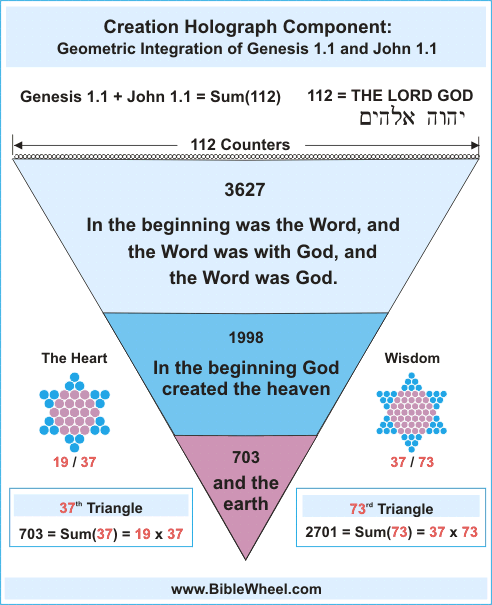


cafepress.com
Favorite
460 × 460 - 26k - jpg |

cafepress.com
Favorite
460 × 460 - 17k - jpg |

pinterest.com
Pastel Geometric Star of David
236 × 236 - 7k - jpg |

zazzle.com
Hanukkah Star of David
512 × 512 - 61k - jpg |

zazzle.com
Hanukkah Star of David
324 × 324 - 26k - jpg |

mygifto.com
JEWISH STAR OF DAVID Travel
480 × 480 - 46k |

amazon.com
STAR OF DAVID Wall Clock
355 × 355 - 34k - jpg |

zazzle.com
Hanukkah Star of David
152 × 152 - 11k - jpg |
"EXPERIMENTO FILADELFIA", LA "MAQUINA DEL TIEMPO"
1776= 48*37= 4*12*37
|
|
|
|
|
KAbbalah or CAbala (jewish mysticism) KA Ba (Eygptian after-life) KA Bah (Muslim Holy Shrine, the shrine itself represents the vagina and the black stone is the uterus) Mec CA is where the ewe go to worship the KA'Bah Mer KAba or Mer KAvah (vehicle of ascension the Levant religions (sheeple people) claim will levitate them to god) KAdosh Knight (Holy Knight reaching perfection) CAduceus (the wand of Mercury, a symbol of the phallus, a sign known as the Caduceus is made by a priest in a ceremony involving the sprinkling of holy water... Naz CA** Lines in Peru ... and the experts have studied these glyphs and they seem to be confused as to their meaning. I do want to suggest that I can interpret them using archetype...stay tuned...I have actually flown over them and let me tell the ewe ... I saw something obviously nobody else has seen Or at least nobody has interpreted these footpaths using the archetypal interpretations, accessed by using the RIGHT BRAINED pictogram language, a language of interpretation that the ancients called the language of the birds. Swasti KA ('good luck' and the Gate of God) http://2012forum.com/forum/viewtopic.php?f=9&t=2038&start=135 |
|
|
|
|
CUBO = TIERRA=SATURNO
ESTRELLA DE DAVID=24 USOS HORARIOS
ULTRA SECRETO MASONICO DETRAS DE "ROSE LINE"
|
|
|
|
|
This post is filled with connections to the KEY 528. Time to connect the mystic Jakob Bohme, and his 'visions' directly to the Vatican. Below is diagram of his called the Signatura Rerum.Quite famous piece of work in certain 'circles'.  Please understand the modern day Kabbalist references this man's work...And Jakob's work can be traced back to Hermetic alchemy. And Hermetic alchemy is traced back to the engimas called Thoth/Hermes/Mercury.  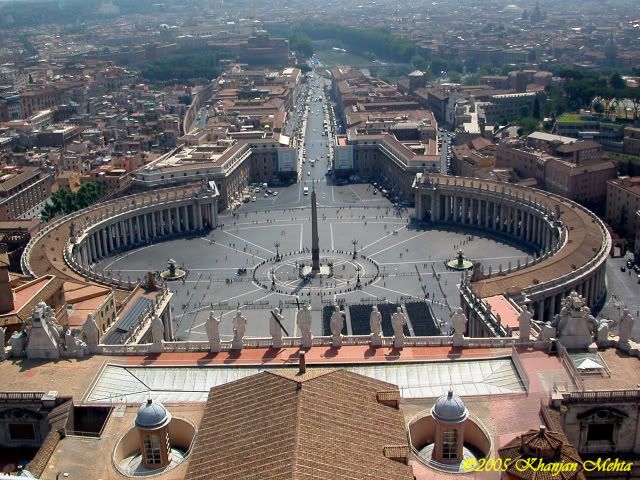 These two images are discussing exactly the same thing. And they are both oriented to make the best comparisons. Personally I did not expect to find what I did... It is far too easy to prove that these two archetypes are intimately connected and pointing us to a specific moment in time. Please observe the 12 statues and the 4 lamp posts, these are the obvious connections, but for the moment, let's move on. Then when we further compare those images to these next two. 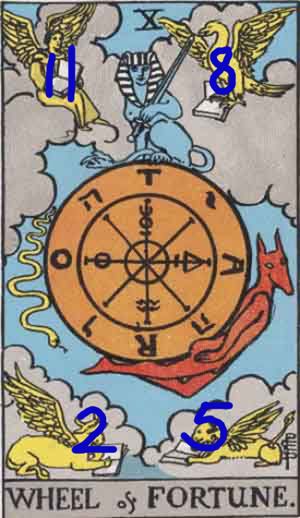 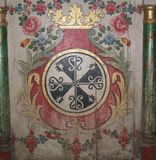 Then you realize the common denominator are the 4 axis of symmetry. And the 4 axis of symmetry means we have an eight-pointed star. The Star of Venus. Maybe Goz can tell us all he knows about Venus? 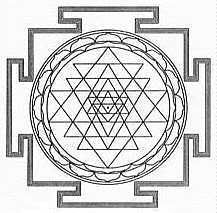 Buddhist Buddhist depiction of 8-pointed star. There are many many ways our most ancient ancestors depicted the 8-pointed Star of Venus but what interests me more is how a modern man, quite small in statue, only 5' tall, a diminutive man driven by a lost love, who apparently was able to duplicate feats only performed by the ancients... move massive blocks of stone by himself.The Empirical physicists, the men who wish to be King, still have NOT figured out, how this uneducated man created the Coral Castle. Here is how Ed Leedskalnin depicted the 8-pointed Star of Venus, and please note, both depictions, the ancient and modern of the Star of Venus is a clue to working some real magic... IMHO 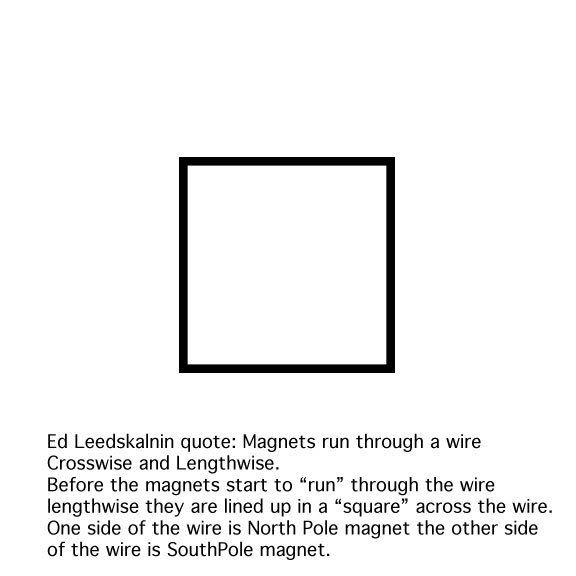 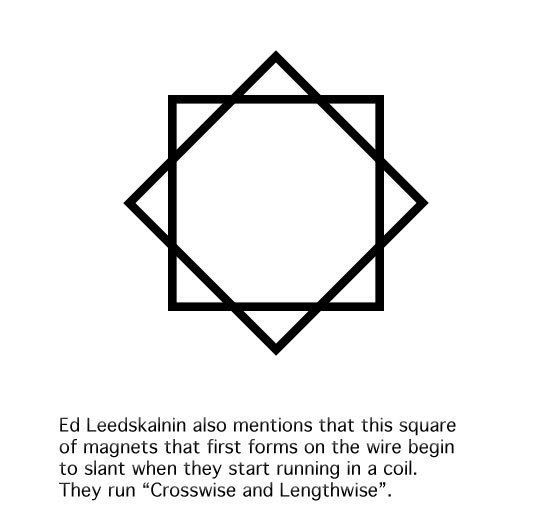 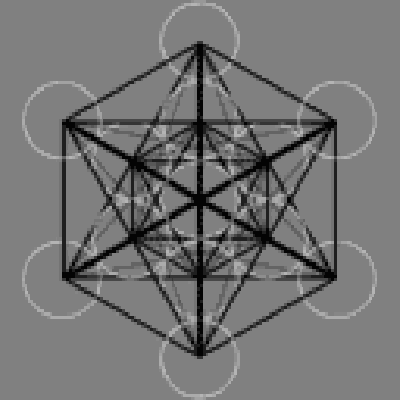 345 345 345 Those three numbers represent the right angle triangle and this next image represents why we need 345. Because 345 is connected intimately to the double helix. 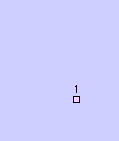  Whether it is man or the grand architect...THEY must use right triangles...understand that....to build empires using light/EM. Now imagine the forces that can move those blocks here on earth, being the same forces that resurrect themselves in 2012. The Lorentz factor (a.k.a. the butterfly effect) is all about 345 and the right triangle. Our DNA builds using 345. 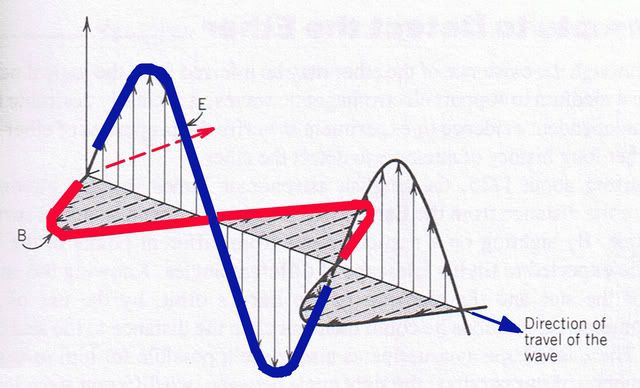 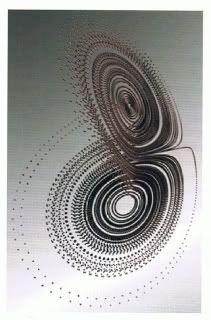 Can you see the wings of the butterfly in the above two photos? Can you see the two S figures? Thus can you see the SS, the Spiritus Sanctus know also as the Holy Spirit?  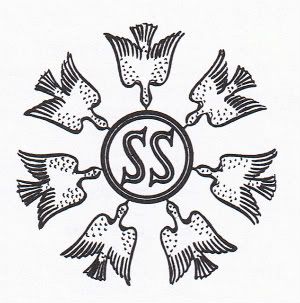 A shifting...morphing Electro-magnetic Field...IS the Holy Spirit/Holy Grail...I can feel it.And VENUS was her name and she looks hot in RED A shifting...morphing Electro-magnetic Field...IS the Holy Spirit/Holy Grail...I can feel it.And VENUS was her name and she looks hot in REDAnd the goddess looks hot ... Hell YES ... count me, err us both in. 2bee continued of course namaste golem / Raphael
_________________
KEY 528=Swastika=ancient Spherical Standing Wave Theory
“A theory is more impressive the greater is the simplicity of its premise, the more different are the kinds of things it relates and the more extended its range of applicability…”
-Einstein http://2012forum.com/forum/viewtopic.php?f=9&t=2038&start=105 |
|
|
 Primer Primer
 Anterior
190 a 204 de 384
Següent Anterior
190 a 204 de 384
Següent Darrer
Darrer
|
|
| |
|
|
©2025 - Gabitos - Tots els drets reservats | |
|
|












 Researching possible explanations for a more accurate telling of the "Star of Bethlehem" has led to a rediscovery of the "method" used by Johannes Kepler to determine important dates in world history. Kepler argued that great events in history occurred every 800 years using multiples of Jupiter/Saturn conjunctions.
Researching possible explanations for a more accurate telling of the "Star of Bethlehem" has led to a rediscovery of the "method" used by Johannes Kepler to determine important dates in world history. Kepler argued that great events in history occurred every 800 years using multiples of Jupiter/Saturn conjunctions. The diagram leads me to ask the following questions:
The diagram leads me to ask the following questions: Johannes Kepler was the last of the great "Mythographers". In De Stella Nova. Kepler applied observational data (i.e." successive conjunctions of Jupiter and Saturn) to reconstruct the history of the world. His chosen method was borrowed from the "lingua franca" of astrology. This method has nothing to do with astrology per se, but Kepler found in it a simple, "bookkeeping" style for tabulating large quantities of time.
Johannes Kepler was the last of the great "Mythographers". In De Stella Nova. Kepler applied observational data (i.e." successive conjunctions of Jupiter and Saturn) to reconstruct the history of the world. His chosen method was borrowed from the "lingua franca" of astrology. This method has nothing to do with astrology per se, but Kepler found in it a simple, "bookkeeping" style for tabulating large quantities of time. The elapsed time counted by proceeding from conjunction to conjunction and back to the origin is thus 40 times 20 years = 800 years, or more precisely, 794.25 years. This represents one-third of a "rotation" of the initial trigon. Similarly, the elapsed time counted by proceeding from trigon to trigon, continuing around the zodiacal circle and back to the original starting point is 40 x 60 years = 2,400 years. A more accurate value for the actual elapsed time is 2,382 years.
The elapsed time counted by proceeding from conjunction to conjunction and back to the origin is thus 40 times 20 years = 800 years, or more precisely, 794.25 years. This represents one-third of a "rotation" of the initial trigon. Similarly, the elapsed time counted by proceeding from trigon to trigon, continuing around the zodiacal circle and back to the original starting point is 40 x 60 years = 2,400 years. A more accurate value for the actual elapsed time is 2,382 years. Successive great conjunctions of Jupiter and Saturn will remain in one triplicity about 200 years (10 successive conjunctions). In other words, it will take 800 years or 40 successive great conjunctions to pass through the four triplicities once. However, in order for all the great conjunctions to return, the cycle must be repeated two more times, for a total of 2400 years.
Successive great conjunctions of Jupiter and Saturn will remain in one triplicity about 200 years (10 successive conjunctions). In other words, it will take 800 years or 40 successive great conjunctions to pass through the four triplicities once. However, in order for all the great conjunctions to return, the cycle must be repeated two more times, for a total of 2400 years.  Great Conjunctions are plotted from 185 BC to 54 AD.
Great Conjunctions are plotted from 185 BC to 54 AD.
